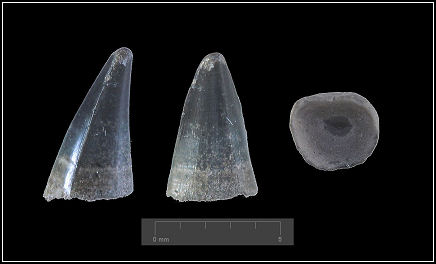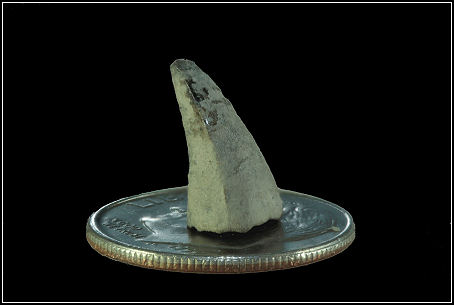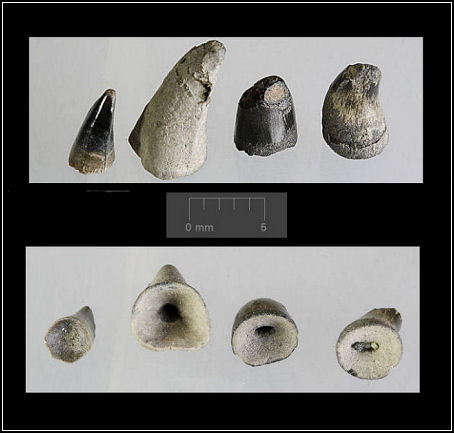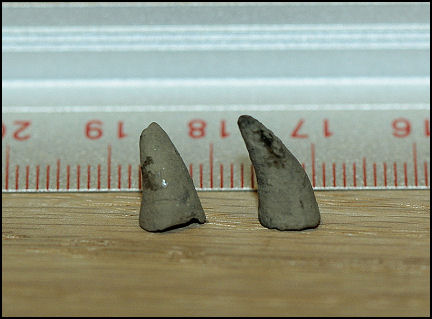|
Pachyrhizodus
(Agassiz) Age Cretaceous - Occurrence Uncommon The fossilized remains of Pachyrhizodus in the NJ area are limited for the most part to isolated teeth (sections of the heavy jaw turn up on occasion). The semi-conical teeth are stout with two weak cutting edges. The depression at the base of the tooth is deep and circular in shape. Most of the teeth Iíve seen have a slight flattening on one side at the base which is easiest to spot when viewing the tooth from the bottom. Thereís a tendency for the enamel to be heavily eroded.
Pachyrhizodus sp.
Average size for Pachyrhizodus teeth is about 1
centimeter in height.
Typical finds for our area.
|



